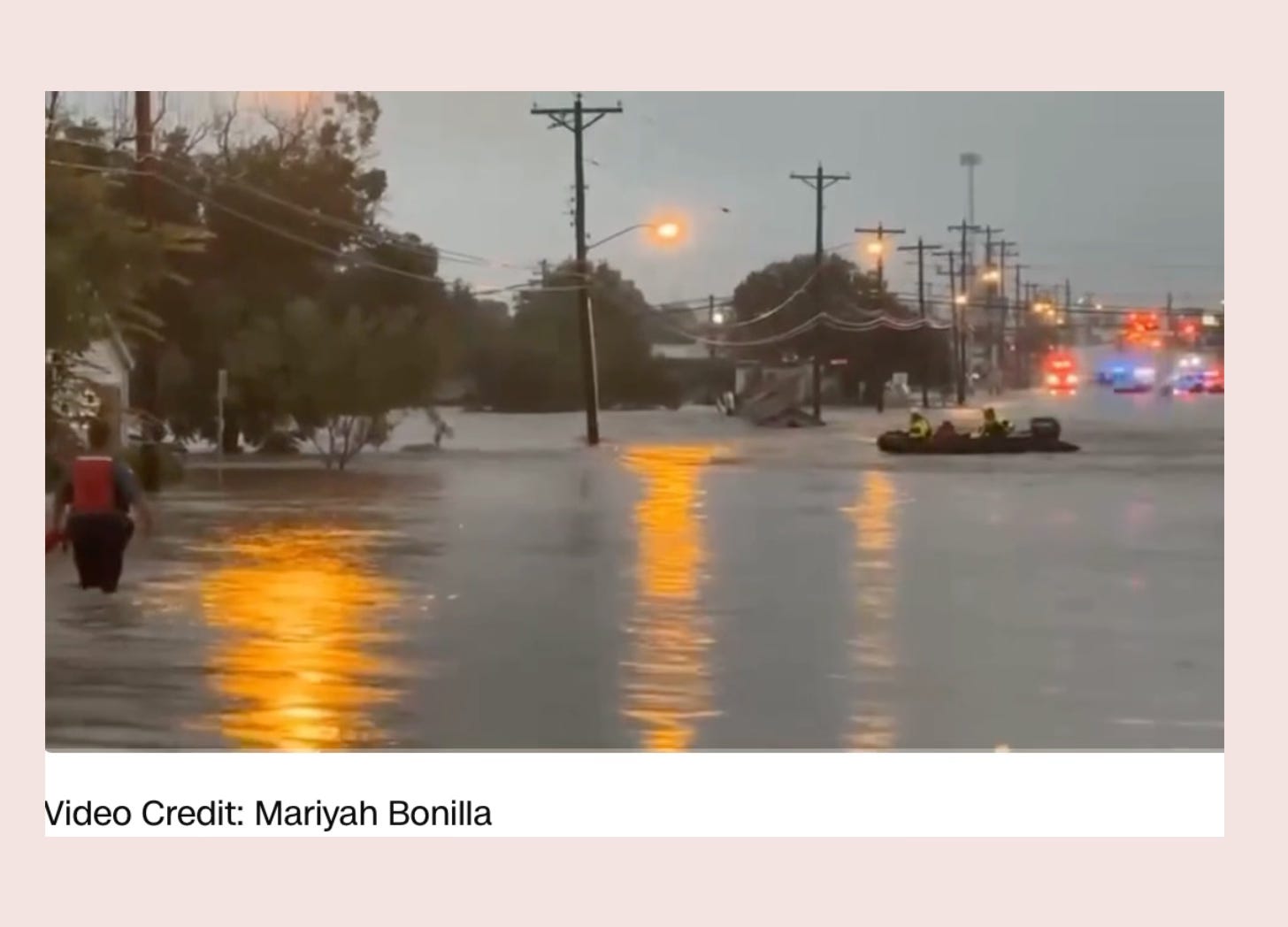Tragic Flooding Again, on the Guadalupe River
Could cloud seeding have been involved, this time
I’ve been watching on X, bridges collapsing, a half-naked women high up a tree in the rain, a man rescued from a lamp pole, helicopters stationary above raging torrents of muddy water – the Guadalupe River in flood.
Then there are the portraits, photographs of children, mostly little girls, looking so innocent and sweet. Now missing.
Likely lost to the violence associated with this catastrophic flood, that came in the darkness of night. Without warning.
I’m so sorry.
There were apparently warning alarm systems put in place along this river, after tragic flooding in 1998. Before that, on July 17, 1987, flooding swept a bus full of children away at a low water crossing near the town of Comfort. The children had been attending church camp.
Since 1838, nearly 200 years ago, flooding along the Guadalupe River has caused catastrophe after catastrophe.
In 1869, the river peaked at 42.3 feet in Comfort, a record still unmatched. The 1913 flood killed 177 statewide, while 1932’s 35-inch deluge near Kerrville left seven dead. The 1987 flash flood swept away the bus full of children from the church camp, and 1998’s spillway overflow at Canyon Lake carved a new gorge, with 31 dead. Each one of those deaths a tragedy.
On July 4–5, this last week the Guadalupe River flooded again, suddenly and now claiming at least 43 lives, including at least 15 children who had been attending a church camp. There are 27 still missing.
Over 850 people rescued, including 167 by helicopter. This flood disaster will rank among the worst in Texas history.
Was this disaster made worse by cloud seeding? Could the 2022 Tonga volcano’s atmospheric effects have played a role? And why, after nearly two centuries of catastrophic flooding has it happened all over again.
In the Hill Country, cloud seeding—a weather modification technique to boost rainfall—has been a tool for water management since the 1990s.
The South Texas Weather Modification Association (STWMA) operates over 6.6 million acres, including Bandera County near the Guadalupe River, using aircraft to disperse silver iodide and calcium chloride into clouds. These chemicals can apparently coax rain from thunderstorms, reportedly increasing rainfall by 15% annually to recharge aquifers and support agriculture.
I have no evidence to confirm seeding occurred during this July storm—protocols typically avoid large systems, I’m told—but the lack of transparency will breed distrust. There needs to be an audit.
Where seeding flights active before the flood? What chemicals are used, and how much? The Texas Department of Licensing and Regulation (TDLR), which oversees these programs, should conduct a public audit of STWMA’s 2025 operations.
Far from Texas, on 15th January 2022 the eruption of Hunga Tonga-Hunga Ha’apai injected 150 million tons of water vapor into the stratosphere—10% of its total water content—reaching heights of 35 miles. Unlike typical eruptions that cool the planet with aerosols, Tonga’s water vapour may have altered atmospheric circulation, potentially amplifying extreme rainfall events. While the Guadalupe flood’s immediate cause was a Gulf of Mexico storm system.




Thank you for a good summary. The role of cloudxseeding is dfinitely an issue. Few people were previously aware of that.
The Texas Hill Country, technically a limestone escarpment called The Edward's Plateau, is beautiful, harsh and potentially deadly region located roughly in Central Texas. The aquifer created by the weathering of the limestone includes large caverns. Several rivers run out of the escarpment, with the Guadalupe being the largest. Kerrville is the largest town in the area.
The harshness of the shallow, rocky soil, typically desert like conditions and winding canyons, contrasted with the beautiful clear cold rivers, has made the area a magnet for small town living, summer camps, retirement living and tourism.
The flood warning system is rudimentary and the largely remote area doesn't lend itself to simple warning systems.
Having a direct family member living there (who is,safe), attended camp in the immediate area as a child and having the pleasure of visiting there occasionally this is a tragedy but not unexpected.
Flash floods in the Hill Country are when, not if.